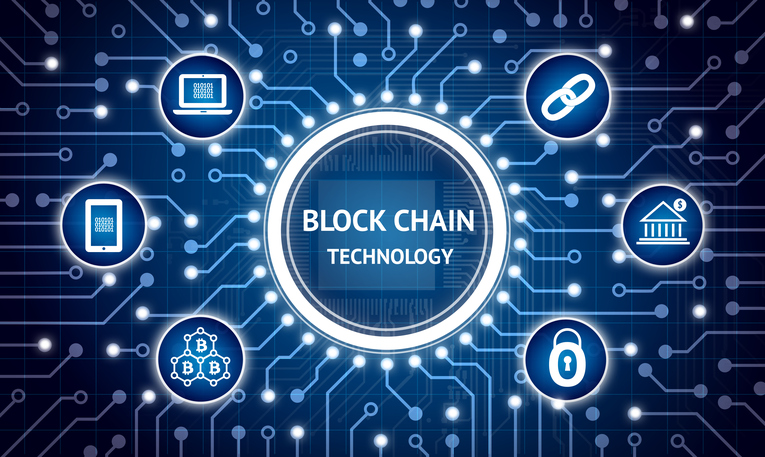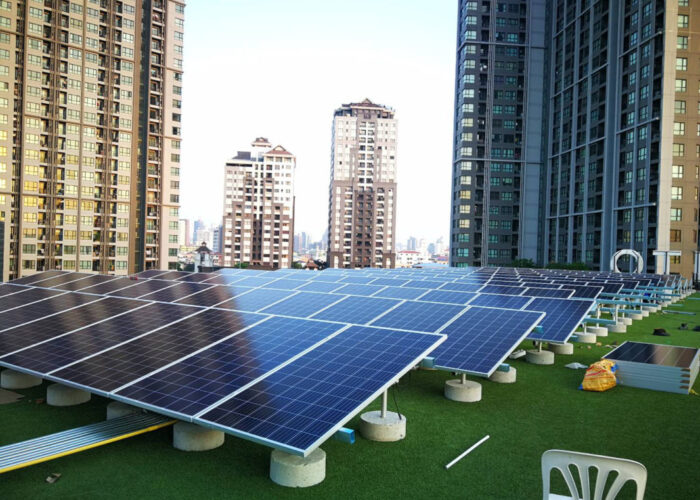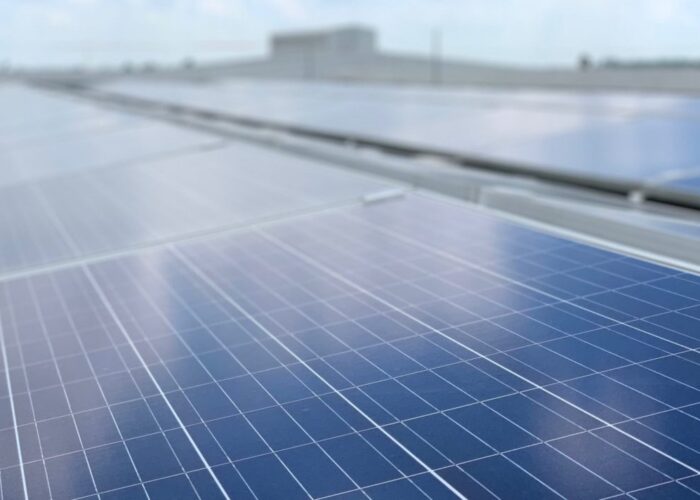
There has been a lot of debate across the globe around blockchain-enabled decentralised energy trading. Peer-to-peer (P2P) sale of power based on blockchain seems very promising. The first projects, such as Brooklyn Microgrid or Power Ledger in Australia, have already been rolled out to test the ability of blockchain for decentralising power distribution to third parties. The blockchain enables disintermediation of power suppliers, to drive transparency and cost reduction.
Established in 2015, the SolarCoin Foundation is administered by worldwide emeritus scientists. The Foundation rewards SolarCoin to promote PV solar energy production. It aims to support an installed PV solar capacity of 3,000GW by 2050 (compared to 300GW installed as of today).
Unlock unlimited access for 12 whole months of distinctive global analysis
Photovoltaics International is now included.
- Regular insight and analysis of the industry’s biggest developments
- In-depth interviews with the industry’s leading figures
- Unlimited digital access to the PV Tech Power journal catalogue
- Unlimited digital access to the Photovoltaics International journal catalogue
- Access to more than 1,000 technical papers
- Discounts on Solar Media’s portfolio of events, in-person and virtual
The SolarCoin acts as an effective incentive for Solar PV producers. Energy producers can redeem a SolarCoin for each MWh generated, regardless of the power consumption. The Foundation plans to create 98 billion of SolarCoins, to ensure the uninterrupted supply of SolarCoin for the next 40 years.
Associated with blockchain technology (ElectriCChain – “an open solar energy generation data project“), the SolarCoin is a cryptocurrency that can be used for transactions or payments between private parties and partners.
The Foundation plays the primary role of an audit, certification and verification agency. PV solar producers can approach the foundation to register their energy production by submitting a dossier including pictures of the installation, meter reading etc. After validating the submission, the foundation grants SolarCoins to the energy producers through a public register. For compatible installations, solar data loggers or inverters can directly report power generation into the blockchain, and receive proportionate SolarCoins.
The Foundation also ensures the integrity of the SolarCoin and manages SolarCoins reserves that are shared into two pools:
Generator Pool with 97.5 billion SolarCoins meant to be distributed among producers
Genesis Pool with 0.5 billion SolarCoins for supporting the Foundation infrastructure and rewarding associations, volunteers and promoters.
As of today, the Foundation is present in 28 countries and the SolarCoin has a value of US$0.20, still far behind the US$30 target set by the Foundation.
What is driving the value of SolarCoins granted to producers?
Scarcity and utility are two key drivers for the success of cryptocurrency.
Scarcity is the simplest factor to secure. It is generally ensured directly in the protocol source code of the cryptocurrency. For instance, the algorithm for Bitcoin’s emission is public and ensures a decreasing production, capped at 21 million Bitcoins. SolarCoins are capped at 98 billion and the objective will be reached in around 40 years.
The main challenge is the utility value of the currency. Cryptocurrencies, as other currencies or commodities, can create significant values in numerous ways. The reduced costs and ease of buying products and services associated with this currency enhances its utility value. The network effect acts as a value multiplier. Value increases as more and more consumers, and energy products / services providers use the currency. A large number of companies accept Bitcoins as means of payment, mainly for marketing reasons but also to differentiate and acquire new clients.
In contrast, SolarCoin is not a preferred mode of payment for most of companies. The following few companies are promoting the circulation of SolarCoin:
-
Smappee, a Smart Home devices manufacturer, focused on monitoring and steering of energy devices
-
Lumo, a crowdfunding platform dedicated to renewables projects
-
Ekwateur, a green power retailer, recent player in the French market.
It is interesting to note that, in all cases, the value proposition exceeds the sole acceptance of SolarCoins. For instance, Lumo grants crowdfunders with SolarCoins generated by funded projects. SolarCoins can be reinvested in another project, spent elsewhere, or converted into conventional currencies, such as dollars or euros.
SolarCoin’s success will depend on the capacity to generate a large and robust ecosystem, and leverage social added value to differentiate from other cryptocurrencies
The Foundation incentivises clean energy development by providing PV solar producers with an additional value. In particular, this value can ease the financing and deployment of decentralised systems in off-grid region (microgrids, solar kits…), which is the stated objective of the Foundation.
SolarCoin is in an early stage of development having succeeded in reaching the 10,000 installations mark (around 200MW). The main challenge is to grow rapidly by:
-
Attracting new solar PV producers, asset managers of large scale plants as well as distributed installations
-
Encouraging more companies to accept SolarCoins and ultimately spend them with other partners.
Already, more than 300,000 daily transactions are performed with Bitcoins and more than 100,000 businesses accept the currency.
Professional associations and institutions such as Solar Power Europe and IRENA strongly endorse the SolarCoin initiative, which provides global recognition, boosting industry-wide visibility and credibility. Stakeholder engagement with power producers, investors, companies and individuals to convince, educate and reconcile on economic and financial and technical challenges is critical. Convincing power producers to share generation data is also a key challenge. At last, driving consensus among companies to promote SolarCoins depends on its liquidity and consumer attractiveness compared to other cryptocurrencies.
The proliferation of SolarCoin will take time. But, even if the SolarCoin achieves half of the Bitcoin success (US$36 billion market capital in May 2017): the future is bright.
Co-authored by Florent Andrillon and colleagues at Capgemini Consulting, Arthur Arrighi de Casanova (managing consultant) and Louise de Brémond d’Ars (consultant).
A French language version of this article first appeared in the daily journal Enerpresse n° 11817, 4th May 2017.







